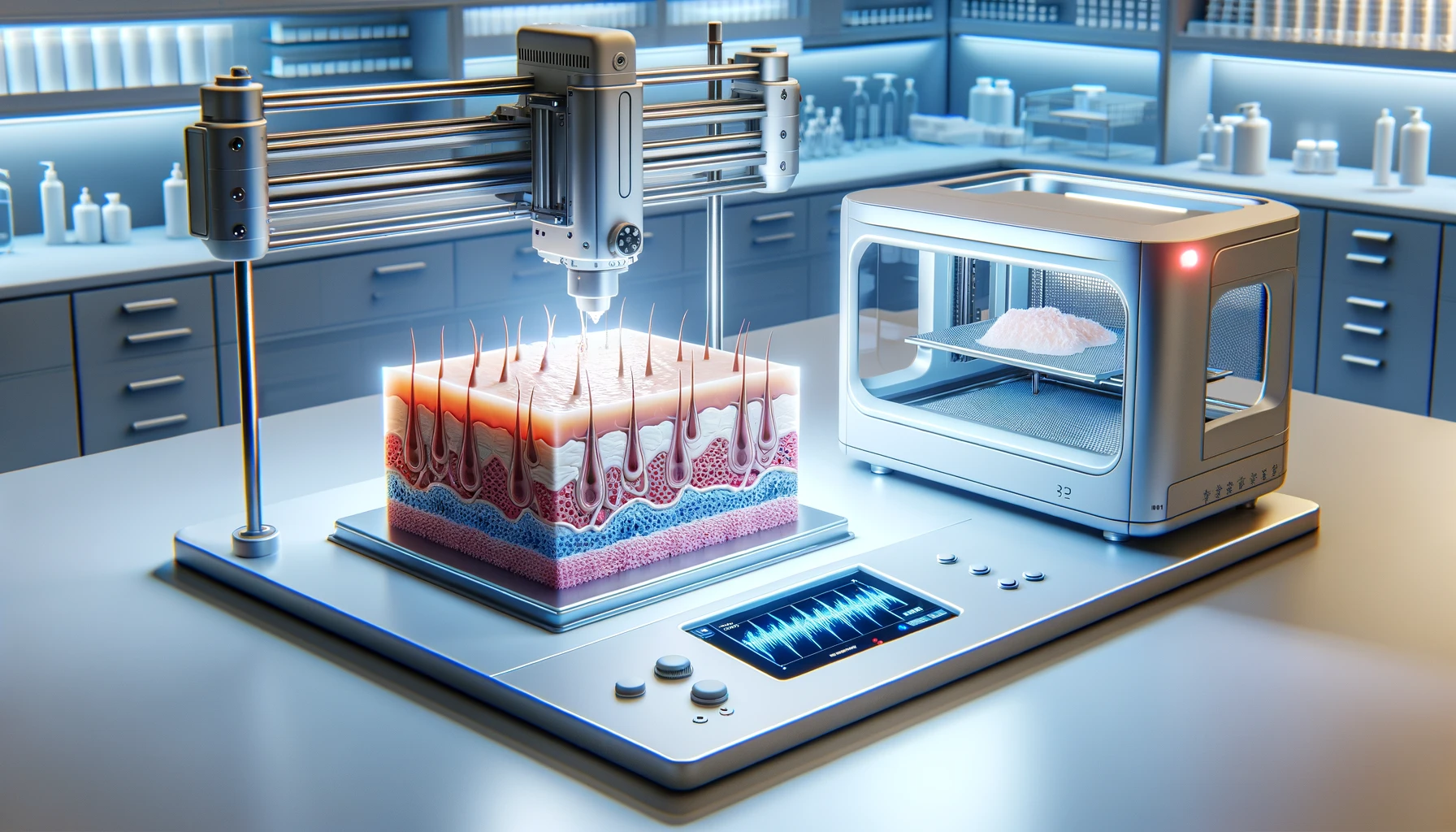
In a groundbreaking study, researchers have unveiled a promising leap forward in reconstructive surgery, particularly for facial injuries and hair loss. An international team led by Ibrahim T. Ozbolat, a professor at Penn State, Leveraged fat tissue to pioneer the intricate process of 3D printing living skin, complete with the potential for hair follicle generation.

Published in Bioactive Materials and recently granted a patent by the U.S. Patent and Trademark Office, the research showcases a novel bioprinting technology. Ozbolat, alongside collaborators from Penn State Health Milton S. Hershey Medical Center, embarked on a mission to revolutionize skin reconstruction, aiming for outcomes that are both functional and aesthetically superior.
“Reconstructive surgery to correct trauma to the face or head from injury or disease is usually imperfect, resulting in scarring or permanent hair loss,” Ozbolat explained. “With this work, we demonstrate bioprinted, full-thickness skin with the potential to grow hair in rats. That’s a step closer to achieving more natural-looking and aesthetically pleasing head and face reconstruction in humans.”
Unlike previous endeavors limited to thin skin layers, Ozbolat's team achieved a significant milestone by intraoperatively printing a complete system of multiple skin layers, including the crucial hypodermis. This approach, conducted during surgery itself, holds promise for more immediate and seamless skin repair, the researchers noted.
“The hypodermis is directly involved in the process by which stem cells become fat,” Ozbolat elaborated. “This process is critical to several vital processes, including wound healing. It also has a role in hair follicle cycling, specifically in facilitating hair growth.”
The lab of Dino J. Ravnic, associate professor of surgery in the Division of Plastic Surgery at Penn State College of Medicine, was tasked with isolating the components that make up the “bio-ink,” which makes up the 3D-printed skin. By utilizing adipose (fat) tissue obtained from surgical patients, the team tapped into the extracellular matrix, the network of molecules and proteins that provides structure and stability to the tissue. Along with the extracellular matrix, the team isolated stem cells from the adipose tissue. These cells have the potential to mature into a range of different cells, depending on conditions. Printing these components together directly onto injury sites, along with a clotting solution for proper binding, facilitated the formation of hypodermis and dermis layers.
“The three compartments allow us to co-print the matrix-fibrinogen mixture along with the stem cells with precise control,” Ozbolat said. “We printed directly into the injury site with the target of forming the hypodermis, which helps with wound healing, hair follicle generation, temperature regulation, and more.”
“We conducted three sets of studies in rats to better understand the role of the adipose matrix, and we found the co-delivery of the matrix and stem cells was crucial to hypodermal formation,” Ozbolat said. “It doesn’t work effectively with just the cells or just the matrix—it has to be at the same time.”
Although fat cells have no direct impact on the cellular structure of hair follicles, they are involved in their regulation and maintenance. This may be the key to the appearance of downgrowths—the initial stage of early hair follicle formation—in the newly formed epidermis.
“In our experiments, the fat cells may have altered the extracellular matrix to be more supportive for downgrowth formation,” Ozbolat speculated. “We are working to advance this, to mature the hair follicles with controlled density, directionality, and growth.”
Hair growth in areas that have been damaged by disease or injury can often limit the possibilities for ‘natural’ appearing reconstructive surgery. Ozbolat is optimistic about this new approach, dubbing it a “hopeful path forward,” with potential applications extending beyond facial injuries. “We believe this could be applied in dermatology, hair transplants, and plastic and reconstructive surgeries—it could result in a far more aesthetic outcome,” Ozbolat said. With further advancements, including ongoing efforts in bone printing and pigment matching, Ozbolat envisions a transformative impact on clinical practice, ushering in a new era of regenerative medicine.
“With the fully automated bioprinting ability and compatible materials at the clinical grade, this technology may have a significant impact on the clinical translation of precisely reconstructed skin.”